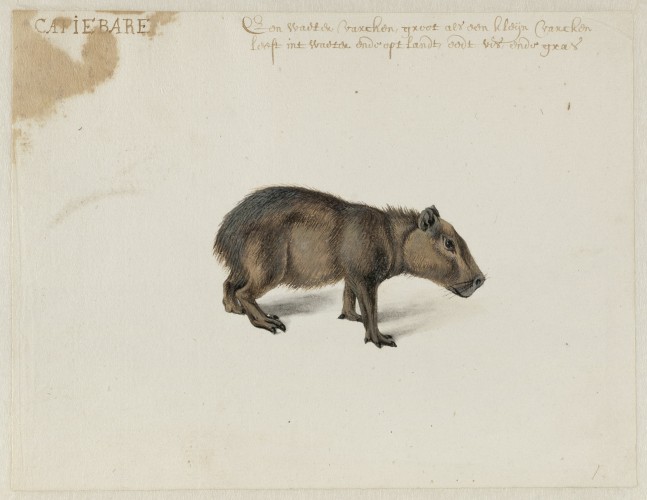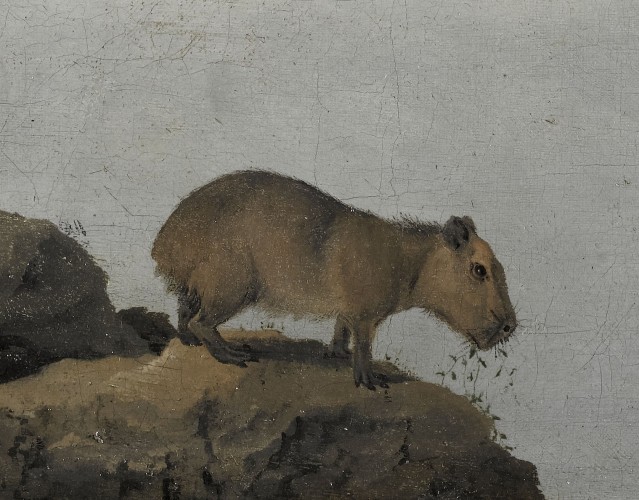Thirty-four unknown drawings by Frans Post (1612-1680) have been discovered in the Noord-Hollands Archief in Haarlem. The seventeenth-century artist from Haarlem, who worked in Brazil between 1637 and 1644, is famous for the paintings of Brazilian landscapes that he produced after his return to the Netherlands. That the native flora and fauna depicted in these paintings must have been based on original drawings made in Brazil was always suspected. Until now, however, not a single animal or plant study from his hand was known.
Information from the Rijksmuseum 8 September 2016
Alexander de Bruin, curator of the image collection of the Noord-Hollands Archief, stumbled, to his utter amazement, upon the unrecognized studies—which include a white-lipped peccary, Brazilian porcupine, nine-banded armadillo, capybara, jaguar, and white-eared opossum—by accident in the course of a digitization project. The story of his sensational discovery will be published in the September issue of the international journal Master Drawings.
Overlooked
The thirty-four drawings, all studies of animals, came from a 17th-century album that once contained 160 drawings of birds by the father and son artists Pieter Holsteijn the Elder and the Younger. The album was donated to the Noord-Hollands Archief in 1888, but the drawings by Frans Post had probably been part of it for centuries. The Brazilian animal studies were completely overlooked until De Bruin found them in 2010.
The group consists of twenty-four colored drawings in gouache and watercolor and ten sketches in graphite. Most of the drawings are annotated in a 17th-century hand, the graphite studies by Post himself. Some of the inscriptions are quite amusing: the macaque monkey is described as very friendly and good-natured (“seer vriendelijck ende aerdich”), the jaguar is very ferocious, destructive and strong (“seer wreedt, vernielende ende starck”), and the armadillo tastes like chicken (“smaeckt gelijck een hoen”). Frans Post must have made drawings of Brazilian plants, too, but these were not found in the archive.
Research
The discovery was so extraordinary and unexpected that a thorough investigation was needed to establish that the drawings really were by Post. Colleagues from the Noord-Hollands Archief, the scholarly journal Master Drawings, and the Rijksmuseum worked closely together on the research. By comparing the animals in the drawings with similar motifs in the paintings, it became clear that the drawings were indeed autograph studies by Frans Post. The cache includes, for example, both a preparatory sketch and a finished gouache for the capybara in a painting in the Louvre, the only work made in Brazil to feature a prominent native animal.
Exhibition
From 7 October, the drawings, together with a selection of related paintings and corresponding stuffed specimens of the South American animals, lent by the Naturalis Biodiversity Center, Leiden, will be on view at the Rijksmuseum, Amsterdam, in the exhibition Frans Post. Animals in Brazil.




